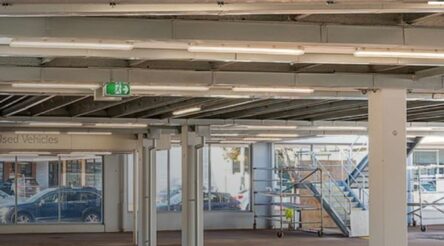Sparc Hydrogen reports success with photocatalytic water splitting

Hydrogen technology developer Sparc Hydrogen has successfully tested its second generation prototype photocatalytic water splitting (PWS) reactor atop a solar tower at the CSIRO Energy Centre in Newcastle, New South Wales (pictured).
Sparc Hydrogen, a joint venture between the University of Adelaide, Fortescue and Sparc Technologies, tested over numerous trial runs the second generation prototype that built on learnings from the first round of testing completed in 2023.
According to Sparc, the performance of the reactor over a range of concentrated solar and thermal operating conditions was significantly improved compared to the first generation prototype, with better temperature and pressure control, gas production and measurement.
Hydrogen gas production was close to that which was estimated based on laboratory results using the same photocatalyst material, providing validation for laboratory testing under concentrated solar simulation.
Sparc Technologies Managing Director Nick O’Loughlin said: “The performance and design improvements that have been demonstrated through the second generation reactor validate the ongoing laboratory work along with the approach that Sparc Hydrogen has taken to on-sun scale-up as we head towards a pilot plant investment decision.
“This prototype testing has persuasively demonstrated concentrated photocatalytic water splitting (PWS) in real world conditions, which in turn reinforces the significant potential of PWS as an alternative to electrolysis for the production of low-cost green hydrogen.
“We continue to be encouraged by the market demand for alternative green hydrogen production technologies, given the challenges being faced by electrolysis projects globally.”
The prototyping was supported through funding from Australia’s Economic Accelerator (AEA) grant program and the CSIRO Kick-Start Program.
Sparc said that both reactor development and formalising relationships with photocatalyst developers were important factors behind a decision to move forward with Stage 2 of the joint venture.
“In parallel with the recent on-sun prototype testing, Sparc Hydrogen has continued to progress development workstreams for the pilot plant ahead of a decision to move to Stage 2 of the joint venture.
“A pre-FEED study completed by an external consultant during Q4 2023 demonstrated the ability for Sparc Hydrogen to build and fund a pilot plant incorporating modular, scalable linear Fresnel concentrated solar mirrors.
“If built, this would be a first-of-its-kind facility demonstrating the combination of photocatalytic water splitting with concentrated solar in an end-to-end green hydrogen production system.”
Recent work on the pilot plant has been focused on detailed reactor design incorporating the attributes of the chosen mirror field, site selection, budgeting and approvals.
Further reading:
Sparc Hydrogen meets goals for catalytic production of hydrogen
Picture: Sparc Hydrogen/second generation prototype photocatalytic water splitting (PWS) reactor mounted on solar tower at CSIRO
@aumanufacturing Sections
Analysis and Commentary Awards Defence Manufacturing News Podcast Technology Videos










